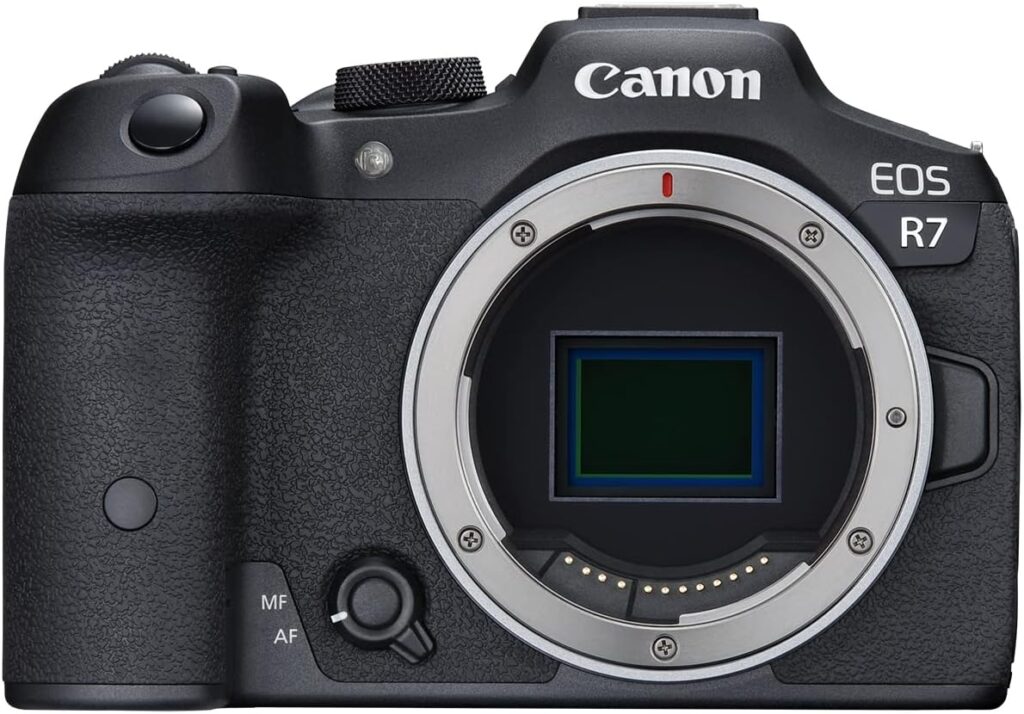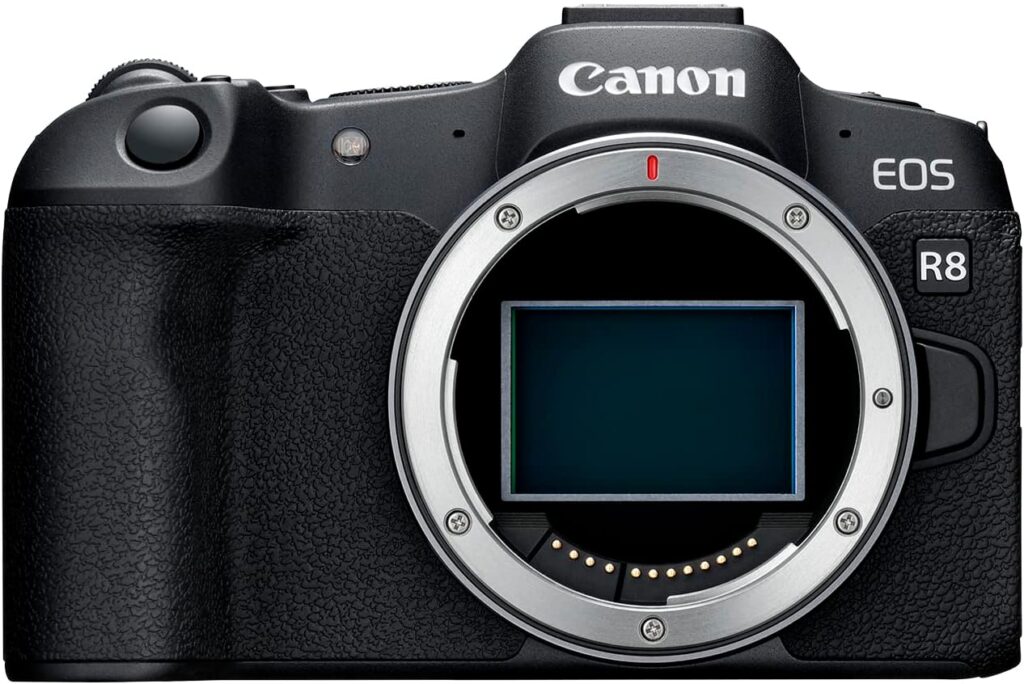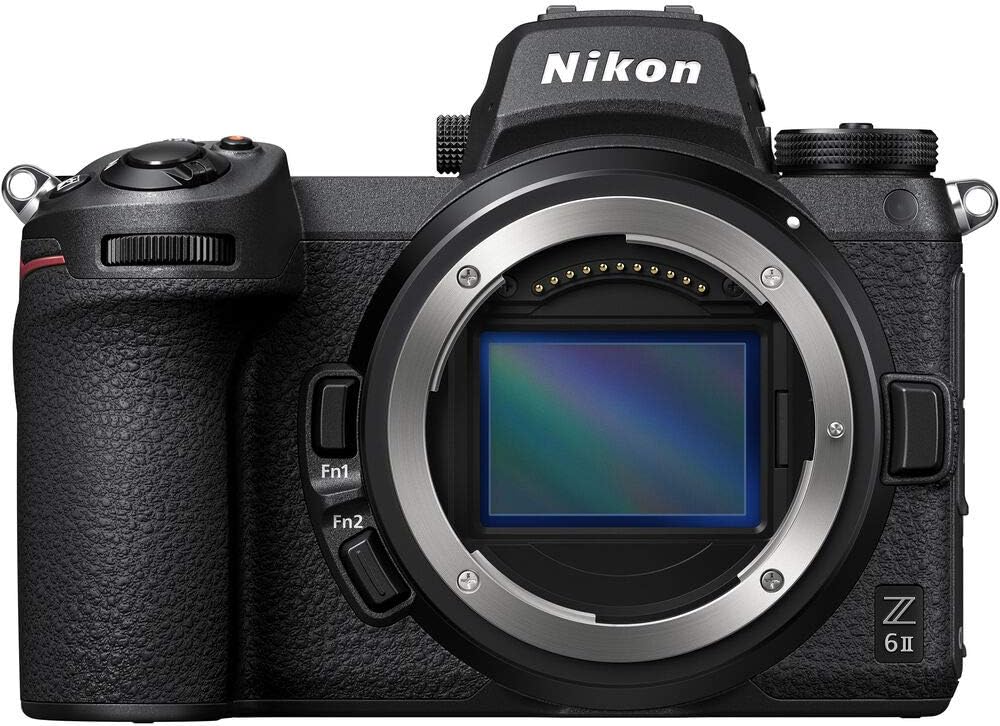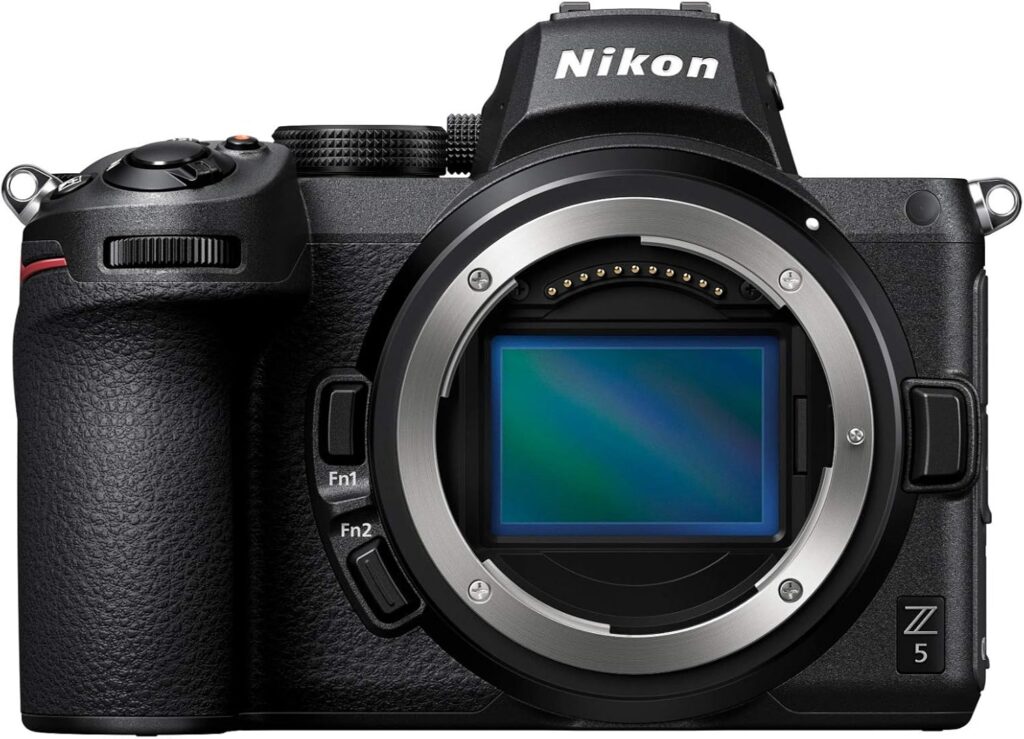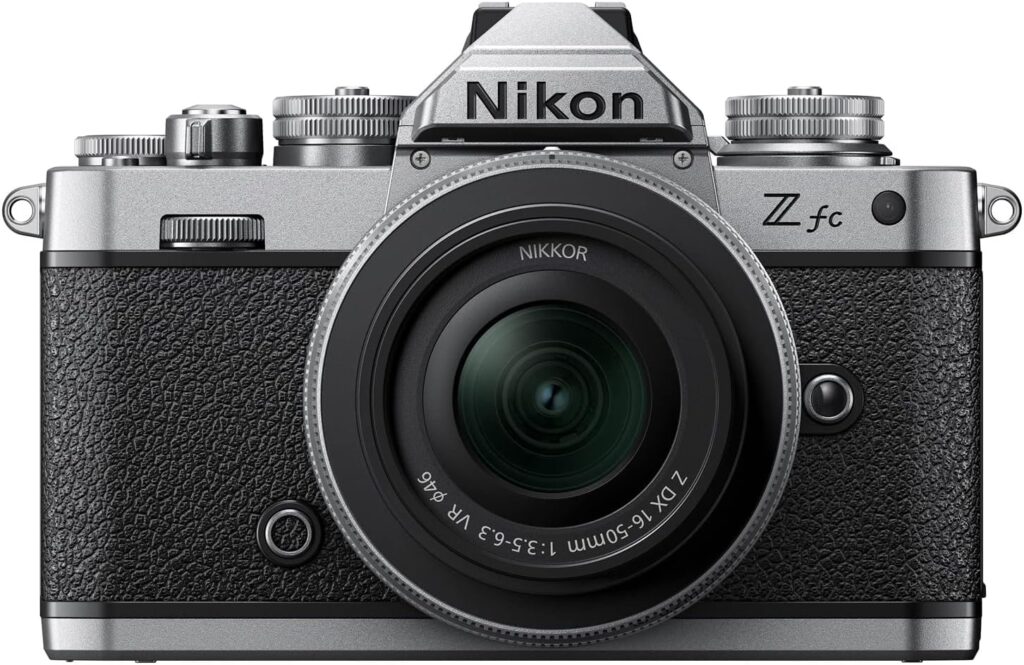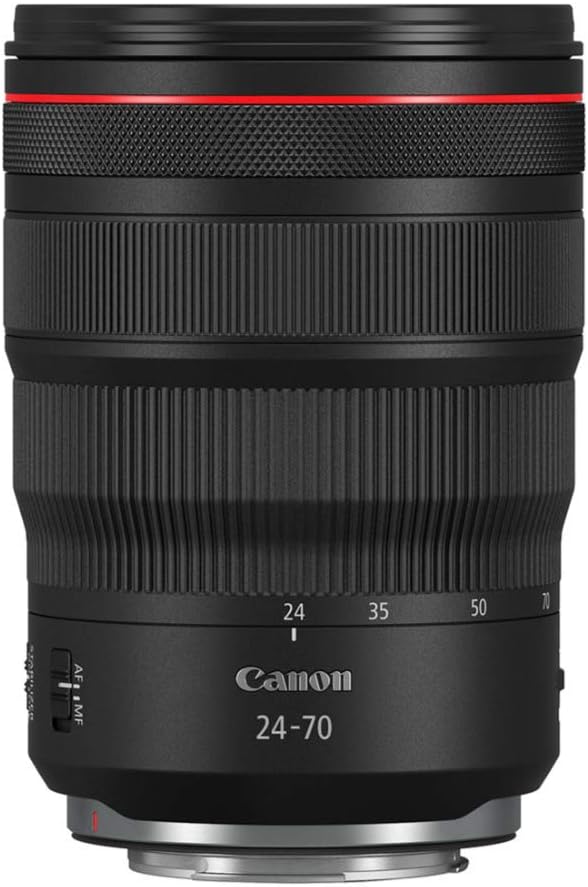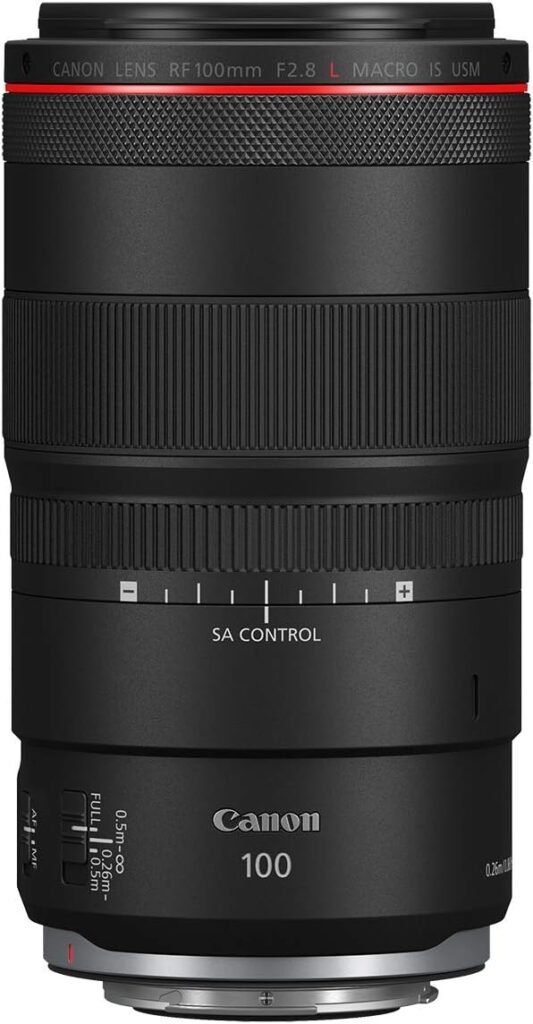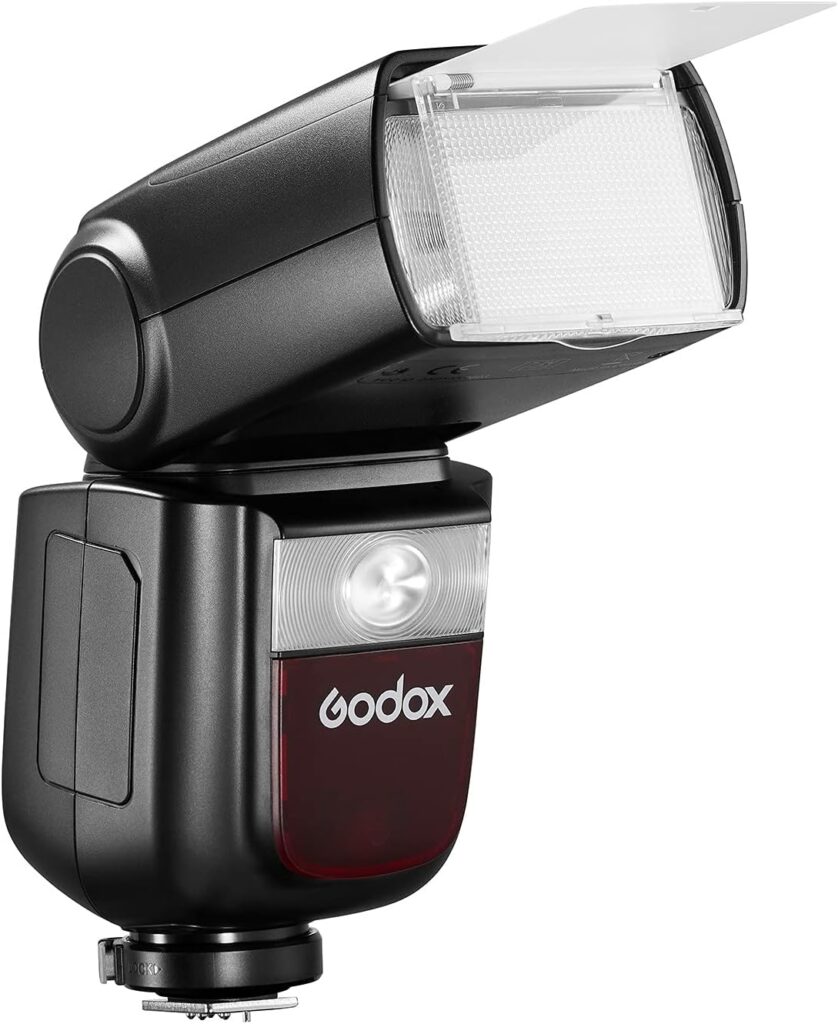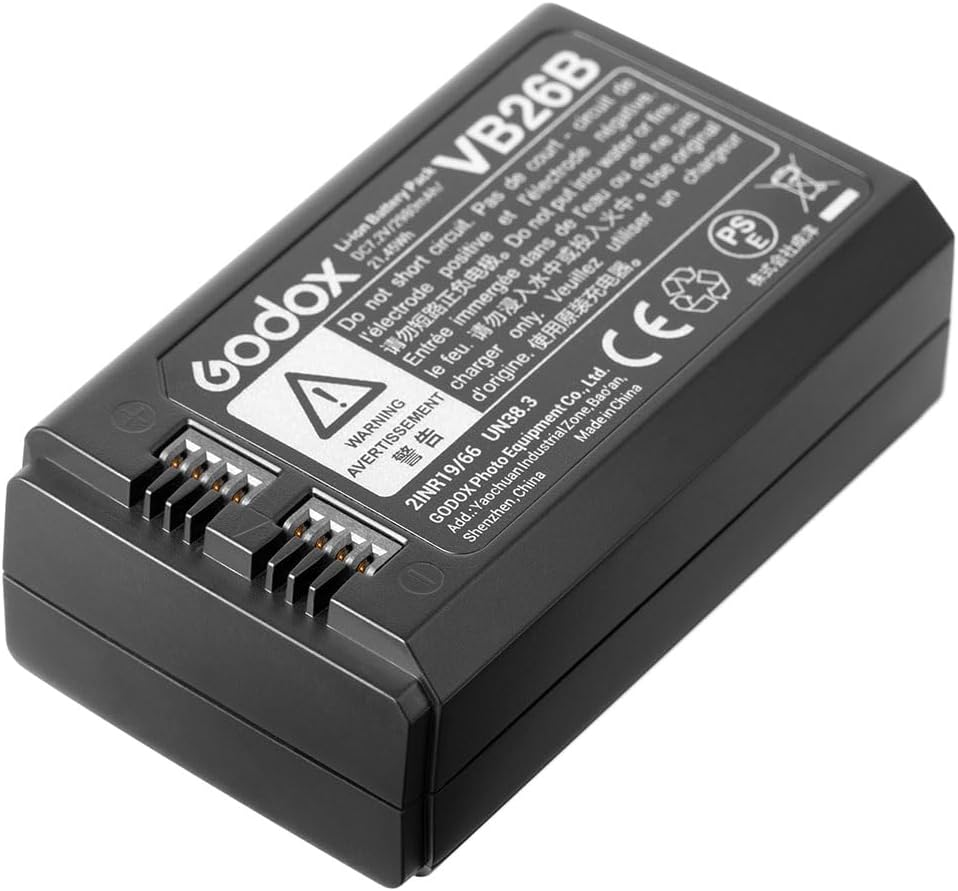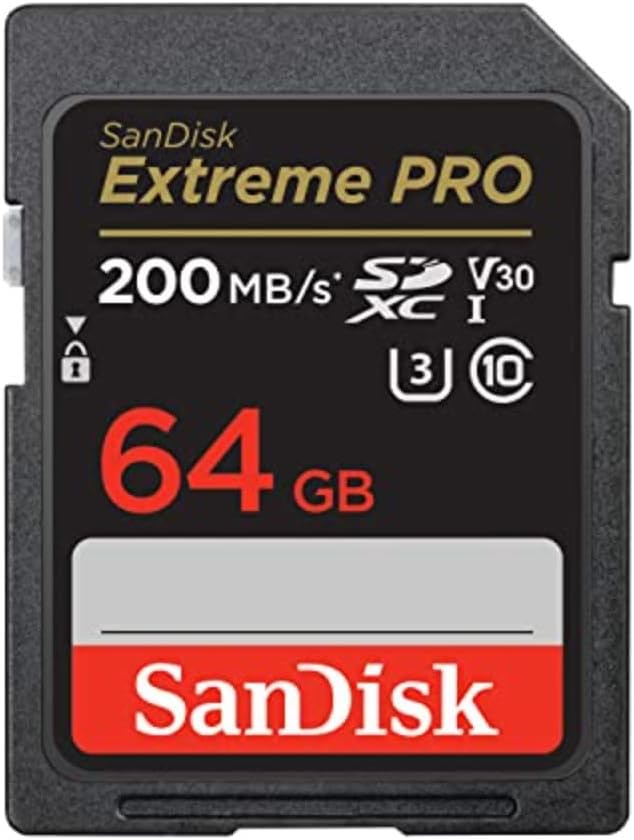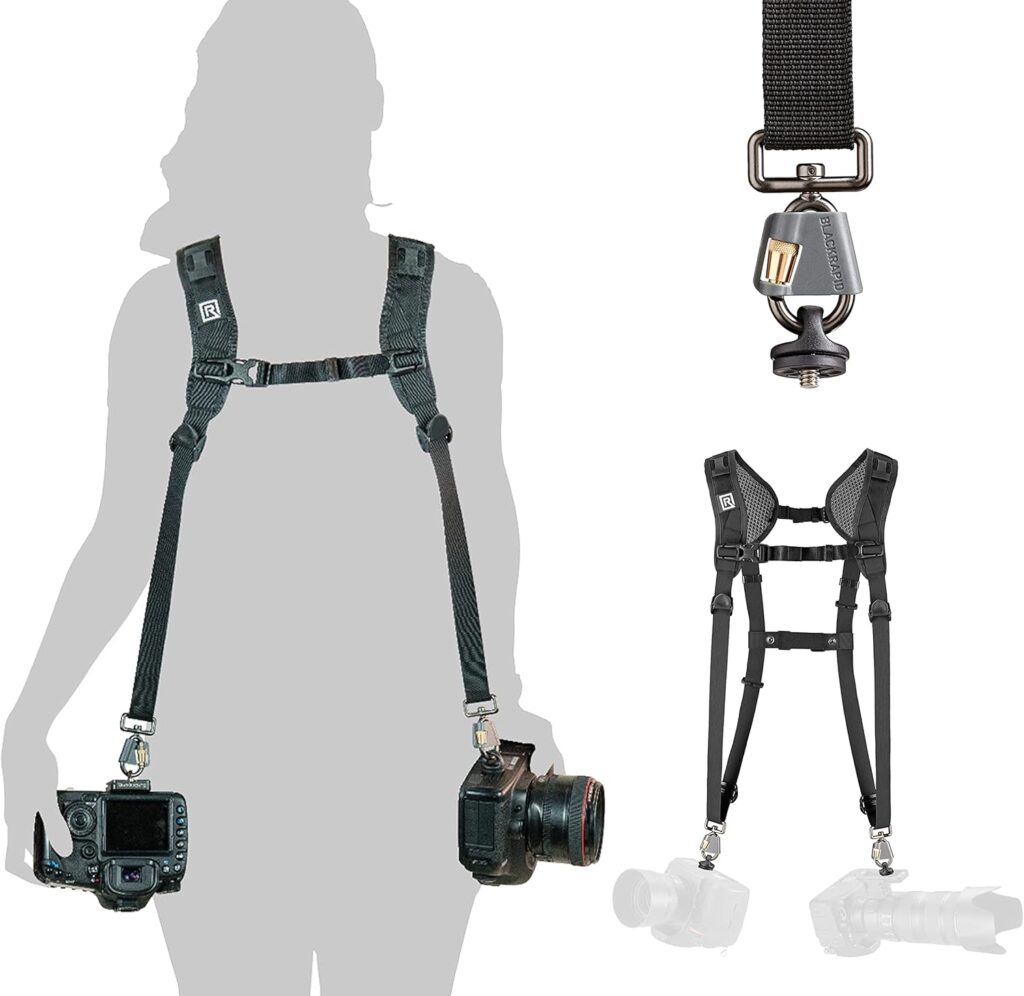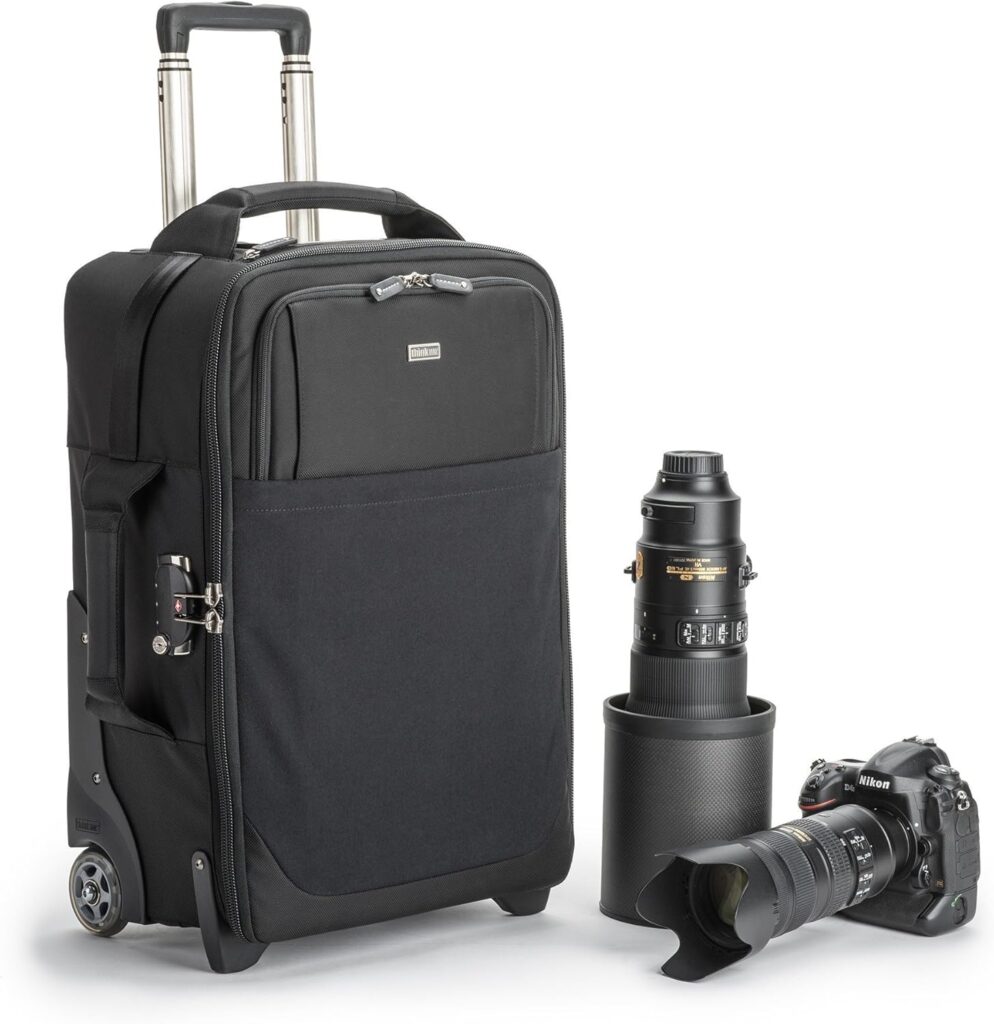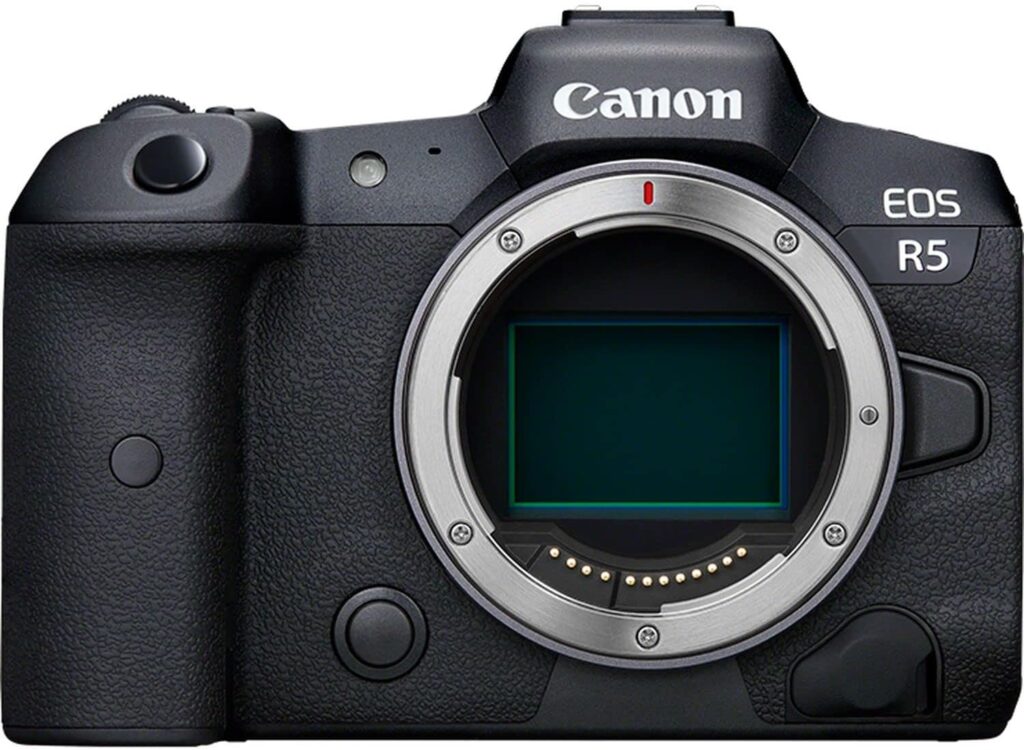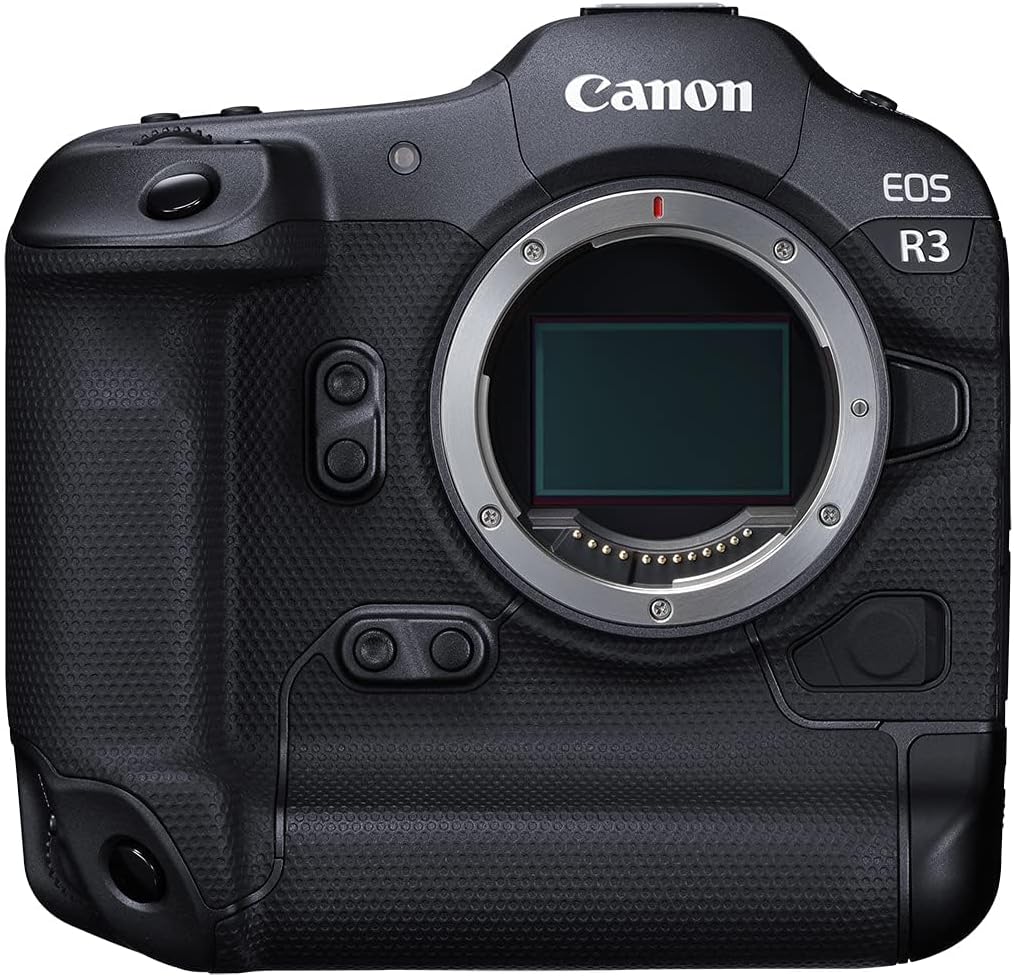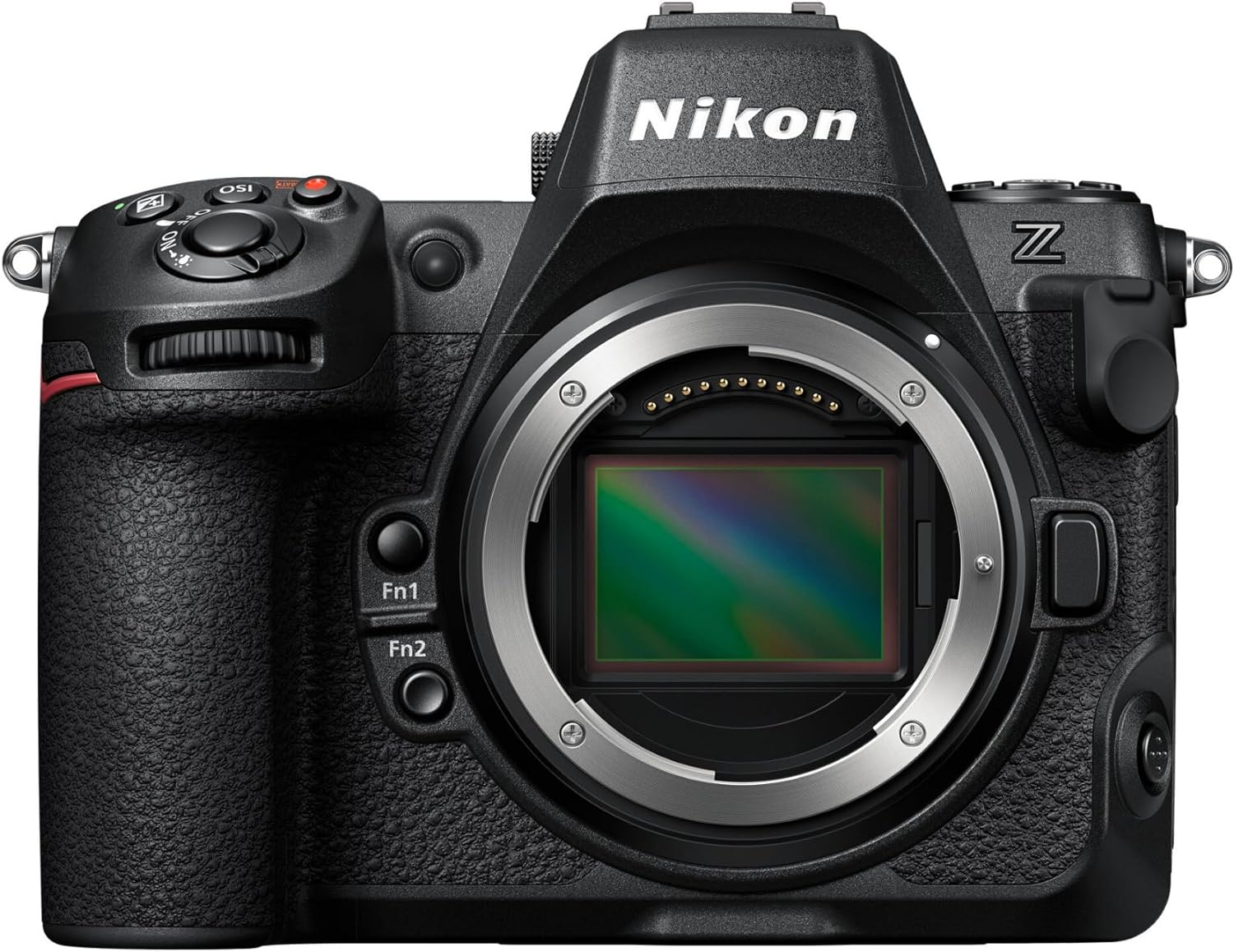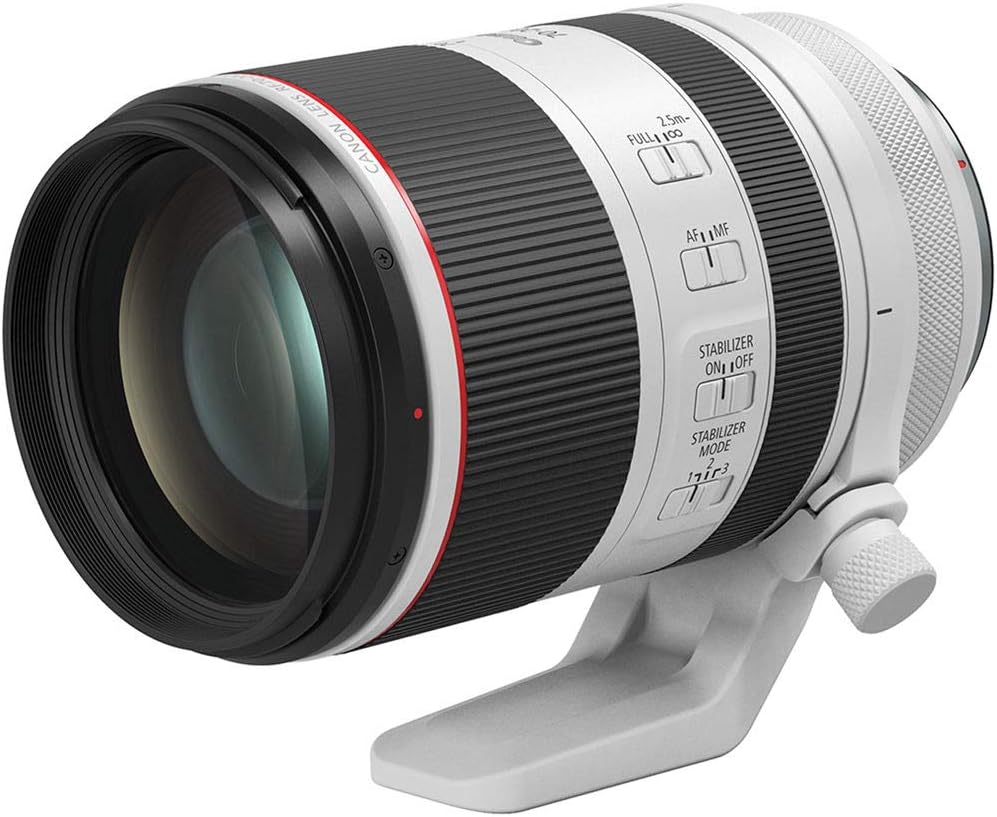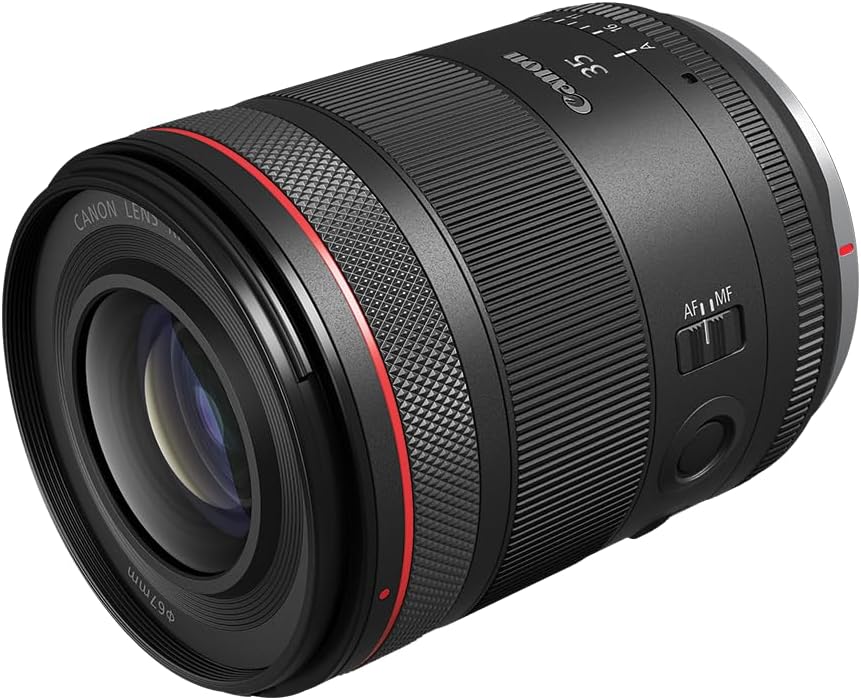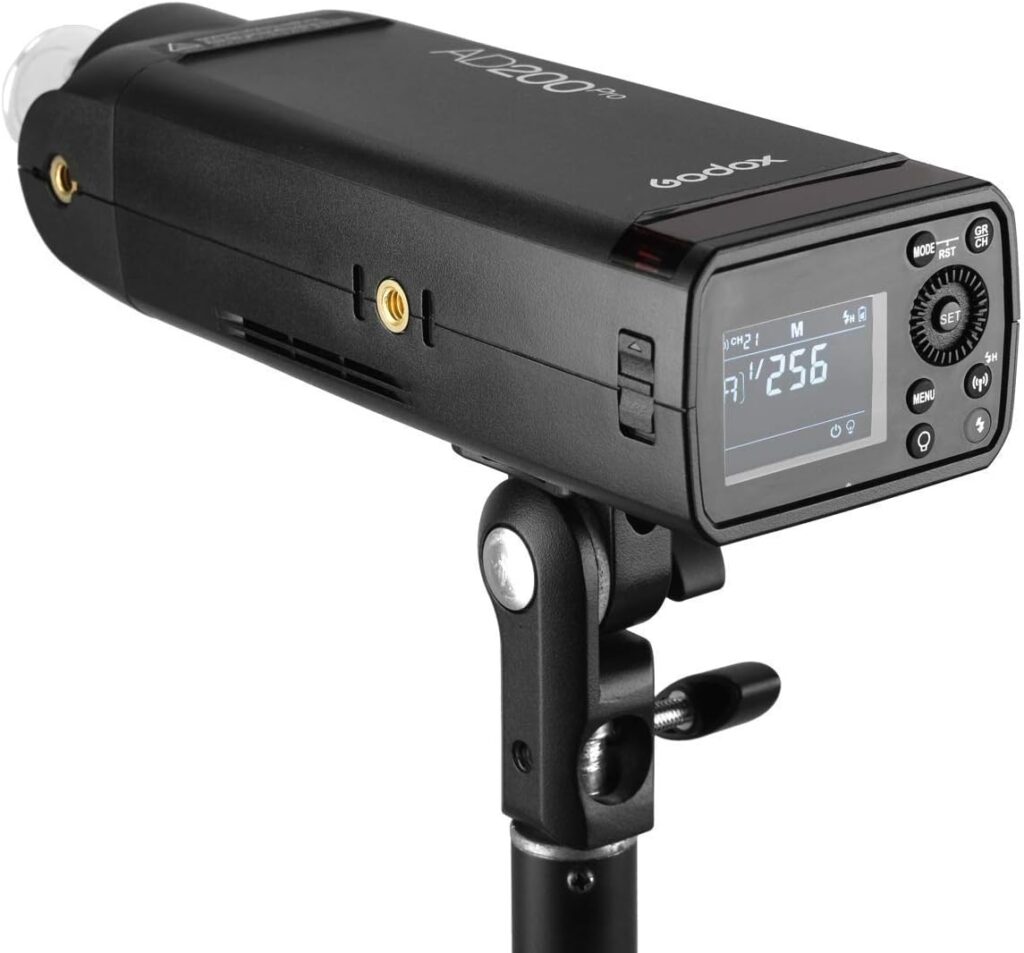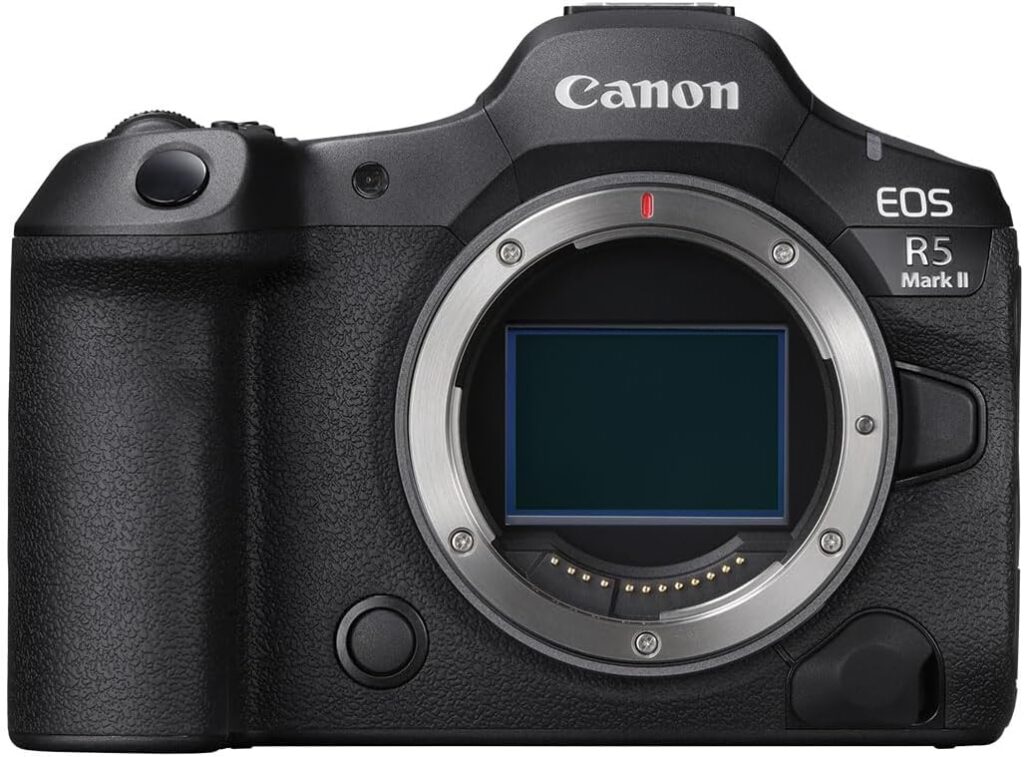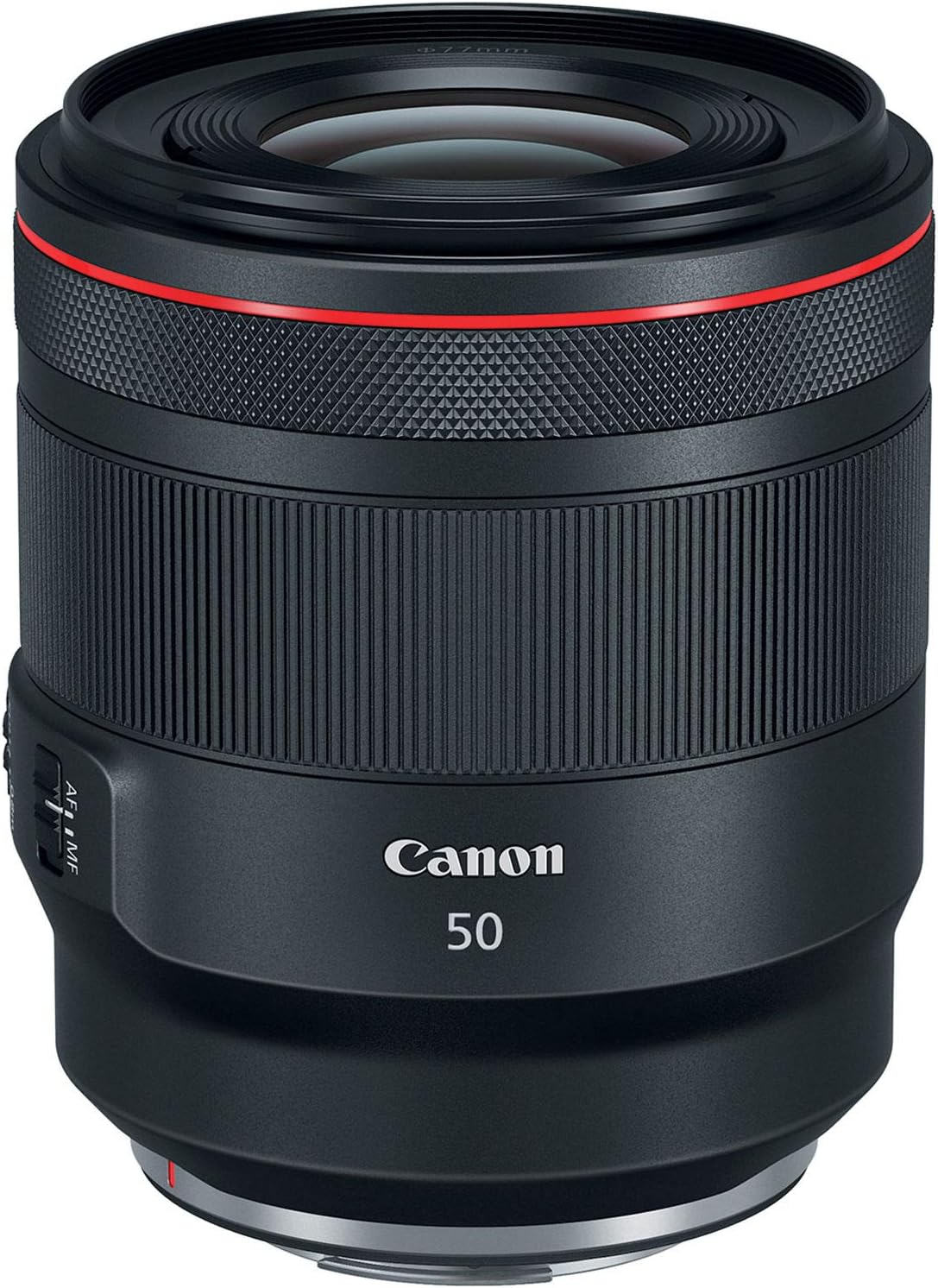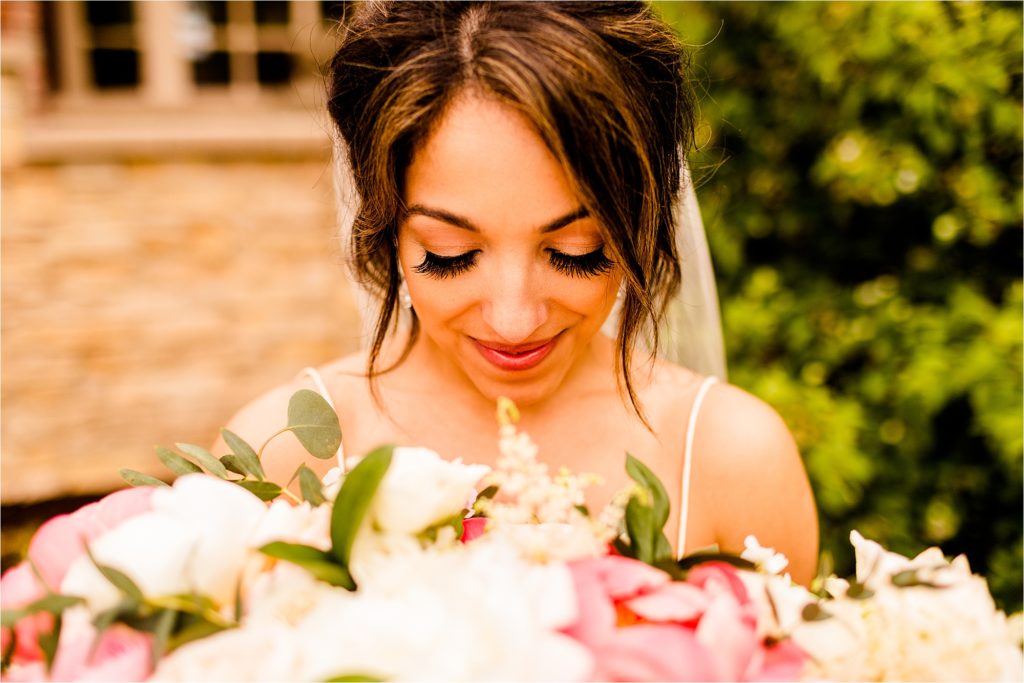
If you’re reading this, you’re probably trying to figure out exactly what camera gear you need for weddings right now. Trust us – we get it. Having the right equipment isn’t about owning the most expensive cameras – it’s about having tools that match where you are in your photography journey.
Your lens collection is going to look completely different if you’re photographing your first wedding versus managing 30+ weddings a year. Most photographers start with one or two versatile lenses, then expand their options as their business grows. When we talk with other photographers, the same questions keep coming up: “What gear do I absolutely need to start?” “When should I upgrade my kit?” “Am I missing anything critical?”
Here’s what we’ve learned about wedding photography gear – there’s no single perfect setup. What works perfectly for a photographer shooting grand ballroom weddings might be too much for someone focusing on intimate backyard ceremonies. That’s exactly why we created this guide – to break down exactly what equipment makes sense for where you are right now.
We’re diving deep into gear recommendations for Canon and Nikon shooters at three different stages. Whether you’re just starting to book your first weddings, seeing consistent inquiries come in, or running a busy wedding business – we’ll cover specific equipment that matches your current needs and challenges.
Before we get started, if you are here you may be a photographer looking into becoming a wedding photographer or one that has been doing this a while. No matter where you are at on that scale, we want to be a helpful resource for you! We hope this helps guides you in all the gear decisions you make for 2025.
Table of Contents
Wedding Photography Gear: Getting Those First Few Weddings
You’ve been thinking about photographing weddings for a while now. Maybe you’ve second shot a few times, or perhaps you’ve been taking portraits and want to step into the wedding world. You’re spending time researching what it takes to become a wedding photographer, and you’re ready to make smart decisions about your gear investments.
If this sounds like you, you’re in the right place. You’re likely wondering if your current camera setup is enough, or if you need to spend thousands on new gear before booking and shooting your first wedding. You might be feeling nervous about having the “right” equipment to handle ceremonies in dark churches or receptions in dim ballrooms, and that’s completely normal.
Our goal here is to help you build a reliable kit that won’t drain your bank account but will still allow you to capture weddings confidently. We’re talking about gear that’s going to serve you well during those first few weddings while you build your portfolio and start gaining real experience. Before we get into camera bodies, we just wanted to let you know that you can always check out our guide on the best camera bodies for wedding photographers in 2025!
Camera Bodies Worth Considering – Canon
Best All-Around Option: Canon R6 II
If you’re serious about jumping into wedding photography, the Canon R6 II deserves your attention. At around $2,000, you’re getting a camera that can handle everything a wedding day throws at you, from dim churches to packed dance floors.
Pros:
- Incredible autofocus that nails focus in any light
- High ISO performance for dark reception venues
- Dual card slots keep your images safe
- Silent shooting for intimate moments
- Fast enough for any wedding scenario
Cons:
- Price tag is a serious investment
- 24MP might feel limiting for heavy cropping
- Complex menu system takes time to master
- Battery life could be better
- Card slots are both SD (no CFexpress)
Our Thoughts: The R6 II reminds us a lot of the legendary 5D Mark III and IV that so many of us built our businesses with. The key difference? The R6 II actually performs better in most situations than what many established pros are still using.
You’re probably debating if you should just grab a cheaper body to start. We get it – we’ve mentored dozens of photographers through this exact decision. But think about it this way: the R6 II handles everything wedding photography throws at you without flinching. No compromises on card slots, no worries in dark churches, no excuses needed for your images. The money you spend here buys you peace of mind and room to grow. In the middle of a wedding, that’s worth more than the price difference.
Best Value Option: Canon R7
If you’re looking to start shooting weddings without draining your savings, the Canon R7 might be your answer. At under $1300, this crop sensor camera opens the door to professional wedding photography while keeping money in your pocket for other crucial gear.
Pros:
- Great autofocus that tracks moving subjects
- Dual card slots for peace of mind
- Lighter weight for long wedding days
- Extra reach helps in ceremony spaces
- Weather sealing handles outdoor weddings
Cons:
- Crop sensor struggles more in dark venues
- Smaller body can feel cramped with big lenses
- Buffer fills up during quick moments
- Battery life needs watching
- Limited lens selection for crop sensor
Our Thoughts: Let’s talk about what the R7 really means for your first wedding season. That crop sensor everyone worries about? It’s actually a blessing when you’re stuck at the back of a church or trying to capture candid moments from a distance. You’ll get more reach without investing in expensive telephoto lenses right away.
Here’s what new wedding photographers often overlook – having dual card slots at this price point is huge. You’re getting professional-level backup in a body that costs $700 less than the R6 II. Yes, you’ll need to be more thoughtful in dark receptions, and yes, you might want to upgrade as your business grows. But the R7 gives you what you actually need right now – reliable autofocus, backup security, and solid image quality. Put the money you save toward your first pro lens – that’s where you’ll see the biggest impact on your images.
Best Entry Option: Canon R8
If you’re looking at your first professional camera for weddings, the R8 deserves a spot on your radar. At just around $1,200, this full-frame mirrorless camera lets you step into wedding photography without maxing out your credit cards.
Pros:
- Full-frame image quality at an entry price
- Compact size for discrete shooting
- Great autofocus in good lighting
- Familiar Canon color science
- Simple menu system for beginners
Cons:
- Single card slot needs careful planning
- No weather sealing for outdoor weddings
- Battery life is shorter than other options
- Limited buffer for quick moments
- High ISO isn’t as clean as R6 II
Our Thoughts: The single card slot on the R8 makes a lot of photographers nervous – and it should. But let’s put this in perspective. If you’re organized with your backup workflow and diligent about changing cards throughout the day, you can absolutely deliver professional results with this camera. We’ve seen too many photographers put off their start in wedding photography waiting for the “perfect” gear setup.
The R8 gives you full-frame image quality and Canon’s latest autofocus technology at a price point that leaves room in your budget for quality lenses. That’s what matters when you’re starting out. You’ll want to be more careful in dark venues and keep extra batteries in your bag, but don’t let these limitations stop you from taking those first steps into wedding photography. Work within its capabilities, master your flash skills early, and focus on building a solid backup workflow. The R8 can help you build a portfolio that attracts your first wedding clients.
Camera Bodies Worth Considering – Nikon
Best All-Around Option: Nikon Z6 II
If you’re entering wedding photography with Nikon, the Z6 II at around $2,000 might be your perfect match. This camera offers professional features without the professional price tag, making it an ideal starting point for wedding work.
Pros:
- You can crank up the ISO in dark churches without getting grainy images
- The autofocus sticks to faces like glue, even in tricky lighting
- Two card slots mean you won’t lose any precious wedding photos
- Silent shooting lets you stay ninja-quiet during ceremonies
- The battery lasts through an entire wedding day
Cons:
- The menu system will take some time to figure out
- You’ll need to be careful in super dark receptions
- Not as many autofocus points as higher-end cameras
- The buffer fills up if you shoot too many photos quickly
- Lower resolution means less room for cropping
Our Thoughts: Let me tell you something about the Z6 II that most reviews won’t mention. In the hundreds of venues we have shot in over the years, I believe this camera can handle about 90% of the situations you’ll face in your first few seasons. The other 10%? That comes down to experience, not gear. You’re probably tempted by the Z9’s specs – we all get caught up in the gear game. But here’s the truth: the Z6 II will give you room to learn, make mistakes, and grow without holding you back. The money you save on this body will serve you better in quality lenses. Ten years of shooting weddings has taught us that’s where the real magic happens.
Best Value Option: Nikon Z5
Looking for a full-frame Nikon that won’t make your wallet cry? At around $1,300, the Z5 is Nikon’s most affordable full-frame mirrorless camera that’s actually wedding-worthy. Don’t let the lower price fool you – this camera packs features that matter for wedding photography.
Pros:
- Full-frame sensor delivers clean images in low light
- Dual card slots protect you from memory card failures
- Weather sealing handles outdoor ceremonies
- Comfortable grip for long wedding days
- Simple menu system that’s easy to learn
Cons:
- Slower shooting speed limits action shots
- Autofocus struggles more in dark receptions
- Cropped 4K video if you need that
- Smaller buffer than the Z6 II
- LCD screen isn’t as bright outdoors
Our Thoughts: This camera might lack some of the flashier features, but it absolutely nails the fundamentals that you need when starting out. We’ve seen countless photographers rush into expensive gear purchases before they’re ready. The Z5 gives you professional full-frame image quality and dual card slots – these are the features that actually matter on a wedding day.
You might hear people talk about the slower burst rate or basic autofocus system. But when we think back to our early days of shooting weddings, these weren’t the features that made or broke our images. What mattered was having a reliable camera that could handle different lighting situations. The Z5 does exactly that, and the money you save can go toward the lenses that will really help you develop your style.
Best Entry Option: Nikon Z fc
If spending $2,000+ on your first wedding camera feels overwhelming, the Z fc might be your answer. At around $1,000, this crop-sensor camera lets you break into wedding photography without breaking the bank. Plus, it’s small enough that no one will mistake you for the video team.
Pros:
- Lightweight body that won’t tire you out
- Great image quality in good lighting
- Simple controls that are easy to learn
- Tilting screen for creative angles
- Stylish design
Cons:
- Single card slot needs careful management
- High ISO performance isn’t ideal for dark venues
- No professional weather sealing
- Smaller buffer than full-frame options
- Battery life needs watching at long weddings
Our Thoughts: When photographers ask us about starting with the Z fc, we think back to our early days with crop sensor cameras. This camera actually gives you better image quality than what many of us started with ten years ago. Here’s what matters: in daylight ceremonies and well-lit venues, your clients won’t know whether you used this or a $6,000 body.
Yes, you’ll need to be more mindful in dark wedding and reception venues. You’ll want to master your flash game sooner rather than later. But here’s what we’ve learned from years of mentoring new photographers – it’s better to start shooting with a more basic camera you can afford right now than to wait until you can buy the “perfect” gear. The Z fc lets you build your portfolio and start booking clients while you save for your next camera body. Just keep some extra batteries in your bag, and always have a solid backup plan for that single card slot.
Lenses We Recommend When Starting In Wedding Photography
Canon 24-70mm f/2.8
You know that moment of panic when you’re about to invest in your first professional lens? We get it. You’ve probably spent hours reading reviews, watching YouTube videos, and asking in Facebook groups what lens to buy first. Here’s the thing about the 24-70mm f/2.8 – it’s like having three prime lenses in one. While your photography friends are switching lenses during crucial moments, you’ll be catching every shot from the bride’s morning mimosas to the last dance. (Link to Nikon & Sony 24-70mm)
Pros:
- Covers most ceremony and reception moments
- Versatile focal range for small spaces
- Fast f/2.8 aperture handles low light
- Sharp enough for detail shots
- Professional build quality
Cons:
- Significant investment around $2,000
- Heavy to carry all day
- Not as wide as 35mm prime
- Not as bright as f/1.4 primes
- Less background blur than primes
Our Thoughts: Look, we actually don’t shoot with the 24-70mm. But here’s why we still recommend it for photographers just starting out: it’s the most practical way to handle your first few weddings. The versatility of this lens means you can focus on learning timelines, working with clients, and finding great light instead of fumbling with lens changes.
When you’re new to weddings, the last thing you need is to miss moments because you’ve got the wrong prime lens on your camera. This zoom range lets you quickly adapt to whatever the wedding day throws at you. Will you eventually want to explore prime lenses? Probably. But for now, the 24-70mm f/2.8 gives you room to grow while not hindering your image quality.
“Nifty Fifty” Canon 50mm f/1.8
Let’s talk about the “nifty fifty” – Canon’s RF 50mm f/1.8. At around $200, this lens might seem too good to be true when you compare it to the 24-70mm’s price tag. But for photographers just starting their wedding journey, this little lens can be a game-changer, especially when you’re dealing with dark reception venues or want that creamy background blur. (Link to Nikon & Sony 50mm)
Pros:
- Incredibly affordable at $200
- Great in low light situations
- Creates beautiful background blur
- Lightweight on your camera
- Perfect focal length for portraits
Cons:
- Build quality feels less professional
- Autofocus isn’t as quick
- No weather sealing
- Fixed focal length takes practice
- Not ideal for group shots
Our Thoughts: Here’s why having this lens alongside your zoom makes sense when you’re starting out: wedding receptions get dark. Really dark. And while the 24-70mm f/2.8 is great, having a lens that can open up to f/1.8 gives you options when the dance floor is only lit by string lights and DJs. Plus, at this price point, it’s a no-brainer addition to your kit.
We’re not saying this should be your only lens, but paired with a 24-70mm, you’ve got yourself a solid starting kit. Use the zoom when you need versatility, switch to the 50mm when you want those dreamy portraits or need the extra light. For around $200, it’s probably the best value lens you can add to your bag when you’re just starting out.
(Optional) Canon RF 100mm f/2.8
The ring shots, the shoes, the invitation suite – those detail photos might seem minor now, but they’re some of the most shared and published images from a wedding day. You might be tempted to skip a macro lens when you’re starting out, but let’s talk about why the RF 100mm f/2.8L might deserve a spot in your first lens kit. (Link to Nikon & Sony 100mm)
Pros:
- Captures true 1:1 macro shots
- Doubles as a great portrait lens
- Professional L-series quality
- Beautiful background blur
- Works well in decent light
Cons:
- Not essential for every shoot
- Can hunt focus in low light
- Learning curve for macro work
- Heavy compared to standard primes
Our Thoughts: Here’s the deal with macro lenses – you don’t absolutely need one to start shooting weddings. Your 24-70mm can capture decent detail shots to get you going. But if you have the budget, the 100mm macro is actually a really smart early investment. Not just for those ring shots, but it doubles as a killer portrait lens during ceremonies and formal photos.
Most new photographers think they need a 70-200mm right away. But we’ve found the 100mm macro to be more useful when you’re starting out. You can shoot ceremonies from the back (just move your feet), capture beautiful portraits, AND nail those detail shots that wedding blogs and magazines love. Plus, when you’re building your portfolio, those macro shots help your work look more complete and professional.
Flashes We Recommend When Starting In Wedding Photography
Godox V860III
Meet the Godox V860III, a $200 flash that’s changing the game for new wedding photographers. When everyone else is telling you to spend $600+ on name-brand flashes, this little powerhouse delivers professional results at a third of the price. Plus, it works seamlessly with both Canon and Nikon systems. If you are looking to find a spot where we compare flashes at all different price levels check out our blog post on the best flashes for wedding photographers in 2025!
Pros:
- Powerful output for reception lighting
- Quick recycling time
- Built-in wireless receiver
- Great battery life
- Easy to learn interface
Cons:
- Build quality isn’t pro-grade
- No weather sealing
- Menu system takes time to learn
- Less reliable in extreme heat
- Customer service can be spotty
Our Thoughts: Here’s what matters about the V860III when you’re starting out – it just works. During your first reception, you’ll be worried about enough things without stressing over your flash. This flash gives you consistent results, lasts all day on one battery, and doesn’t require a loan to buy. You can even grab two of them for less than the price of one high-end brand flash.
Most importantly, it gives you room to grow into off-camera flash setups when you’re ready. The built-in wireless capabilities mean you can start experimenting with creative lighting without buying a bunch of extra gear. Start with one for on-camera work, add a second for backup, and you’re set for your first wedding season.
Accessories We Recommend When Starting In Wedding Photography
Flash Stands and Background Support
When you’re starting out in receptions, you’ll want to light more than just what’s in front of your camera. Many new photographers find the Ulanzi TT43 stand to be a perfect starting point – it’s stable enough for your flash but compact enough to carry all day.
Flash Batteries and Charger
Many new photographers make the mistake of relying on regular AA batteries for their flashes. For the Godox system, investing in their lithium-ion batteries makes more sense. They’ll last through an entire wedding day, and you won’t be scrambling to change batteries during crucial moments. One spare battery per flash is typically enough to get through those first weddings confidently.
Memory Cards
Memory card management can make or break a wedding photographer’s day. Most experienced photographers recommend starting with six 64GB cards rather than fewer large-capacity ones. This strategy means you’re not risking an entire wedding if one card fails. Invest in a solid card case too – it’s a simple way to keep your cards organized and protected during hectic wedding days.
Camera Straps
For those long wedding days, a standard camera strap isn’t going to cut it. The Holdfast MoneyMaker in brown leather is a classic choice for wedding photographers – it holds two cameras and ages beautifully. If leather isn’t your style, the BlackRapid Dual Camera Harness is a more affordable option that many wedding photographers swear by for its functionality.
Camera Bags
Starting out, you’ll want a bag that can hold your gear while being easy to carry and access. The Think Tank Airport Roller v3.0 is perfect because it holds a ton of gear and rolls smoothly through venues. For a backpack option, the Peak Design Everyday Backpack (30L) is really popular because you can access your gear without taking the bag completely off.
Wedding Photography Gear: Consistently Shooting 5-10 Weddings Per Year
You’ve got a few weddings under your belt now. Your Instagram is filling up with real wedding photos, you’re getting referrals from past clients, and your inbox is seeing more inquiries than last year. The gear you started with has served you well, but you’re starting to see its limitations during those challenging reception venues or when you need better backup solutions.
If this sounds familiar, you’re at a crucial point in your wedding photography journey. You’re probably debating which gear upgrades will have the biggest impact on your work, or wondering if more expensive equipment will help you book higher-end weddings. You might be feeling the pressure to keep up with other photographers in your market who seem to have every new piece of gear that comes out.
This section is all about making smart choices as your business grows. We’ll focus on gear that will actually improve your work and make wedding days run smoother. No fluff, no unnecessary purchases – just practical upgrades that make sense for where you are right now. Because you need gear that helps you deliver better photos, not just gear that looks impressive to other photographers.
Camera Bodies Worth Considering – Canon
Best All-Around Option: Canon R5
Now that you’ve got regular weddings coming in and you’re handling bigger events, you might be ready for a camera that takes your work to another level. The R5 at $2,899 makes sense at this stage because you’re shooting more demanding venues, dealing with high-end clients, and need a robust backup system.
Pros:
- 45MP for maximum detail and cropping
- Class-leading autofocus system
- Outstanding in low-light situations
- Dual card slots (CFexpress + SD)
- Superior build quality
Cons:
- Larger investment at $2,899
- Large file sizes need more storage
- Heat issues with video
- CFexpress cards are expensive
- Battery life needs managing
Our Thoughts: At this point in your wedding photography journey, upgrading to the R5 makes a lot of sense. Your style has probably evolved since your first season. You’re likely taking on different types of weddings, working with various lighting situations, and pushing your creativity further. The R5 gives you room to experiment and grow without limitations.
The 45MP sensor becomes really valuable when you need more cropping options during ceremonies, or when you’re capturing those tiny details in wedding rings that clients love. And now that you’re shooting more weddings, having your current camera as a reliable backup is a game-changer for your peace of mind. This isn’t just an upgrade in image quality – it’s an investment in delivering consistent results as your business grows.
Best Value Option: Canon R3
If your business is gaining serious momentum and you’re ready to make a big move with your gear, the R3 deserves your attention. At $4,499, it’s a significant step up in price from the R5 or R6 II, but at this stage in your business, you might be ready for a camera that can handle anything a wedding day throws at you.
Pros:
- Unmatched autofocus performance
- Exceptional low-light capabilities
- Built like a tank for reliability
- Fast shooting with no blackout
- Superior battery life
Cons:
- Price tag is a serious investment
- 24MP might feel limiting
- Larger body size
- Heavier than other R series
- Overkill for many situations
Our Thoughts: Here’s something you might not expect – the biggest advantage of the R3 isn’t its specs, it’s how it changes your workflow. When you pick up this camera after shooting with other bodies, you immediately notice how everything just responds faster. No lag when switching settings, no waiting for the buffer, no hunting for focus. Everything feels immediate.
The price tag is no joke, and honestly, it’s not the right move for every photographer at this stage. But if you’re getting into higher-end weddings where you need absolute reliability, or you’re shooting a lot of fast-paced cultural ceremonies where moments happen in split seconds, the R3 might be worth considering. The battery life alone is a huge stress reliever – you can shoot an entire wedding day without swapping batteries. Just remember: a $4.5K camera won’t book you more weddings, but it can help you serve your existing clients better.
Camera Bodies Worth Considering – Nikon
Best All-Around Option: Nikon Z8
If you’ve been shooting with an entry-level Nikon and your bookings are picking up, the Z8 at $3,999 could be your next move. This camera hits that sweet spot of professional features without the flagship price of the Z9, making it perfect for photographers who are seeing consistent bookings.
Pros:
- 45MP sensor for maximum detail
- Exceptional autofocus system
- Solid build quality
- Dual card slots
- Great in varied lighting
Cons:
- Significant investment at $3,999
- Large files need more storage
- Learning curve from basic bodies
- Additional CFexpress costs
- Battery life needs managing
Our Thoughts: Moving up to the Z8 isn’t just about getting a better sensor or more megapixels. It’s about having a camera that matches where your business is heading. The files give you more options in post-production, especially when you’re developing your signature editing style. The autofocus system just works – which means you can focus more on anticipating moments rather than worrying about technical issues.
This camera makes the most sense if you’re starting to book bigger weddings and need a more robust system. Your current Nikon can become your backup body, giving you a complete professional system that clients expect at this level.
Lenses We Recommend Adding At This Stage
70-200mm f/2.8
When you’re shooting 5-10 weddings a year, investing in a 70-200mm f/2.8 starts making a lot of sense. At $2,499, it’s a big purchase, but now that you’ve got consistent bookings and understand what you’re missing in your current kit, this lens could be your next smart move.
Pros:
- Perfect ceremony distance
- Beautiful compression for portraits
- Fast f/2.8 aperture throughout
- Quick and silent focusing
- Professional image quality
Cons:
- Expensive investment at $2,499
- Not compatible with teleconverters
- More delicate extending design
- Shorter minimum focus distance can surprise you
- Filter size is larger than older EF version
Our Thoughts: At 5-10 weddings a year, you’re probably realizing that zooming with your feet isn’t always possible (or ideal). Sure, your 24-70mm has gotten you this far, but there’s a reason so many photographers add the 70-200mm when bookings pick up. Picture this – you’re photographing a Catholic ceremony where you can’t move around much, or you’re at a wedding where intimate family moments happen across a large space. This lens lets you be present without being intrusive.
The 70-200mm will change how you approach a wedding day. Some photographers fall in love with the compression and find themselves reaching for it during ceremonies, portraits, and even reception moments. Others discover they prefer getting up close with prime lenses. With 5-10 weddings a year, you know your shooting style better now. This lens is a big investment, but if it fits your approach to weddings, it’ll quickly become an essential part of your kit.
35mm f/1.4
Shooting 5-10 weddings a year means you’ve developed your own style, and you might be craving that extra bit of creativity that prime lenses offer. The RF 35mm f/1.4L at $1,499 hits a sweet spot for wedding photographers who want to add something special to their kit without going overboard on spending.
Pros:
- Beautiful natural perspective
- Incredible in low light
- Perfect for storytelling
- Fast, accurate autofocus
- Great for tight spaces
Cons:
- Substantial investment at $1,499
- Fixed focal length limitations
- Heavy for a prime lens
- Large front element
- Takes time to master framing
Our Thoughts: The 35mm focal length is like having a conversation with your subjects. It’s wide enough to tell a story but not so wide that it distorts. When you’re shooting 5-10 weddings a year, you start noticing how different focal lengths affect the feeling of your images. The 35mm f/1.4 gives your photos a sense of being right there in the moment – whether you’re capturing getting-ready scenes in a tiny hotel room or dance floor moments at the reception.
A lens this sharp with this much character will push you creatively. That f/1.4 aperture means you can keep shooting well after the sun sets without cranking your ISO. If your style leans toward documentary coverage or you love environmental portraits, this might be the perfect addition to your growing kit.
Flashes We Recommend Adding At This Stage
Godox AD200 Pro
Now that you’re shooting more weddings, you’ve probably noticed how much difference good lighting makes in your reception photos. If you’re already comfortable with your V860III for on-camera flash, the AD200 Pro at $299 is a perfect next step for more lighting power and creative options.
Pros:
- More power than speedlights
- Versatile bare bulb/speedlight heads
- Fast recycle time
- Great battery life
- Works with your V860III system
Cons:
- Bigger than a regular speedlight
- Takes time to learn power settings
- Needs stands/modifiers
- Not as portable
- More setup time needed
Our Thoughts: The AD200 Pro isn’t just another flash – it’s a game changer for receptions. When you’re trying to light up a dark venue or overpower harsh DJ lights, having this much power makes a huge difference. You can stick with your V860III on camera and set up the AD200 Pro in a corner of the reception. Or use it for creative night portraits when you need that extra punch of light.
Working 5-10 weddings a year means you’re ready to experiment with more advanced lighting. The AD200 Pro lets you try new techniques without investing in expensive studio strobes. Keep your V860III as your main on-camera flash, and pull out the AD200 Pro when you need that extra boost of light or want to get creative with off-camera lighting.
Wedding Photography Gear: Consistently Shooting 15+ Weddings Per Year
If you’re shooting 15+ weddings a year, your gear needs are different. Your equipment isn’t just about capturing beautiful images anymore – it’s about reliability, efficiency, and having backup solutions for everything. You’re handling bigger weddings, dealing with more demanding venues, and your clients expect consistent, professional results every time.
Whether you’ve been shooting full-time for years or you’re making the transition now, your equipment has to keep up with a demanding schedule. Those back-to-back wedding weekends mean your gear needs to be dependable, your workflow needs to be streamlined, and you need backup options for every piece of equipment.
At this level, investing in professional gear isn’t just about image quality – it’s about protecting your business and your reputation. Let’s break down what makes sense for a photographer handling a full wedding season.
Our #1 Recommendation For Full-Time Wedding Photographers
Canon R5 Mark II
When you’re shooting 15+ weddings a year, you’ve moved beyond needing a better camera – you need a smarter camera. The R5 Mark II at $4,299 is specifically designed for professionals who can’t afford to miss moments or wrestle with their gear during critical parts of a wedding day.
Pros:
- Game-changing Eye Control AF
- Stacked sensor for superior low-light
- 30fps with no blackout
- Enhanced buffer performance
- Professional cooling system
Cons:
- Large files require workflow adjustments
- CFexpress cards add extra cost
- Learning curve for eye control
- Battery life needs monitoring
Our Thoughts: You know what it’s like running a full-time wedding business – every weekend brings new challenges and unique moments you can’t recreate. At 10+ weddings a year, you need more than just a reliable camera. You need gear that makes your job easier, especially during those high-pressure moments we all face.
We’re talking about those times when you’re wrangling a 20-person family formal in five minutes, or when you’re shooting a ceremony in a venue that barely allows enough light to see. The R5 Mark II feels like it was built by someone who actually understands these challenges. The Eye Control AF alone changes everything about how you’ll handle group shots and quick moments. No more stressing about focus points when you’re trying to capture emotional parent reactions or first look tears.
For those of us handling back-to-back wedding weekends, having a camera that thinks ahead makes all the difference. While there are other great cameras on the market, the R5 Mark II is the only one we’d recommend upgrading to right now if you’re at this stage in your business. The features it brings to wedding photography make it worth prioritizing over any other camera body currently available.
Lenses We Recommend Adding At This Stage
RF 50mm f/1.2L
When you’re shooting 15+ weddings a year, you might be ready to invest in glass that helps define your style. The RF 50mm f/1.2L at $2,299 could be that lens that helps elevate your work as you take on more premium weddings.
Pros:
- Tack sharp even at f/1.2 for dramatic bride and groom portraits
- Creates dreamy, round bokeh perfect for detail shots
- Great focal length for getting ready and reception coverage
- Zero focus hunting in low light scenarios
- Weather sealed for unpredictable wedding days
Cons:
- $2,299 is a significant chunk of your gear budget
- Heavy weight impacts all-day shooting stamina
- Not practical for family formals or large groups
- Requires more physical movement in tight spaces
- Learning curve to master that shallow depth of field
Our Thoughts: At this stage in your business, you need tools that deliver something special for your clients. The RF 50mm f/1.2L isn’t about replacing your workhorse zoom lenses – it’s about having that magic piece of glass that creates those “wow” portfolio images. When you’re charging premium rates and working with discerning clients, this lens helps justify those higher prices with truly exceptional images.
For full-time wedding photographers who already have their core kit dialed in, this lens is the next logical step. It’s not just about the technical specs – it’s about having a lens that gets you excited to create something unique at every wedding, even when you’re shooting 3-4 times a month. The images this lens produces simply look different from what your current kit can deliver.
Flashes We Recommend Adding At This Stage
If you’re shooting 15+ weddings per year, you’ve likely got your lighting setup dialed in. You know what works for your style, you’ve got reliable backup options, and you understand how to handle any lighting scenario a wedding day throws at you. While we could recommend more powerful strobes or additional lighting tools, at this stage in your business, it’s less about the gear and more about how you use it. However, if you’re looking to explore different flash options or want to see what flash units we recommend for wedding photographers are using in 2025, check out our blog post on the best flashes for wedding photographers in 2025.
Conclusion
Whether you’re just starting out, shooting 5-10 weddings a year, or running a full-time business with 15+ weddings annually, investing in the right gear at the right time makes a huge difference in both your work and your peace of mind. But remember – great wedding photography isn’t about having the most expensive gear. It’s about understanding your current needs, making smart investments when they make sense for your business, and choosing tools that help you deliver consistent results for your clients.
If there’s one piece of advice we can leave you with, it’s this: invest in gear that solves real problems you’re facing, not just because it’s new or popular. Your equipment choices should help you grow your business and improve your work, making your wedding days smoother and your images better. Whether that means starting with a reliable first kit, adding key pieces as bookings increase, or upgrading to the latest professional gear as a full-time photographer – let your business growth guide your gear decisions.
Affiliate Disclosure: Some links in this post are affiliate links, meaning we may earn a commission if you make a purchase through our links, at no extra cost to you. As wedding photographers ourselves, we only recommend gear we’ve thoroughly researched or would use in our own business. Your support helps us continue creating valuable content for the photography community.

